“As long as the hummingbird had not abandoned the land, somewhere there were still flowers, and they still go on.” -Leslie Marmon Silko.
Hummingbirds are essentially colored balls with wings that fly around flowers. They’re chirpy, they’re fast, and most of all; they’re beautiful!
There are more than 300 known species of hummingbirds right now. Each with its own colors, sizes, behaviors, and habitats.
Today, we’ll get to know the 10 of those different species that you can find in the state of South Carolina.
10 Most Common Hummingbirds in South Carolina
1. Black-Chinned Hummingbird
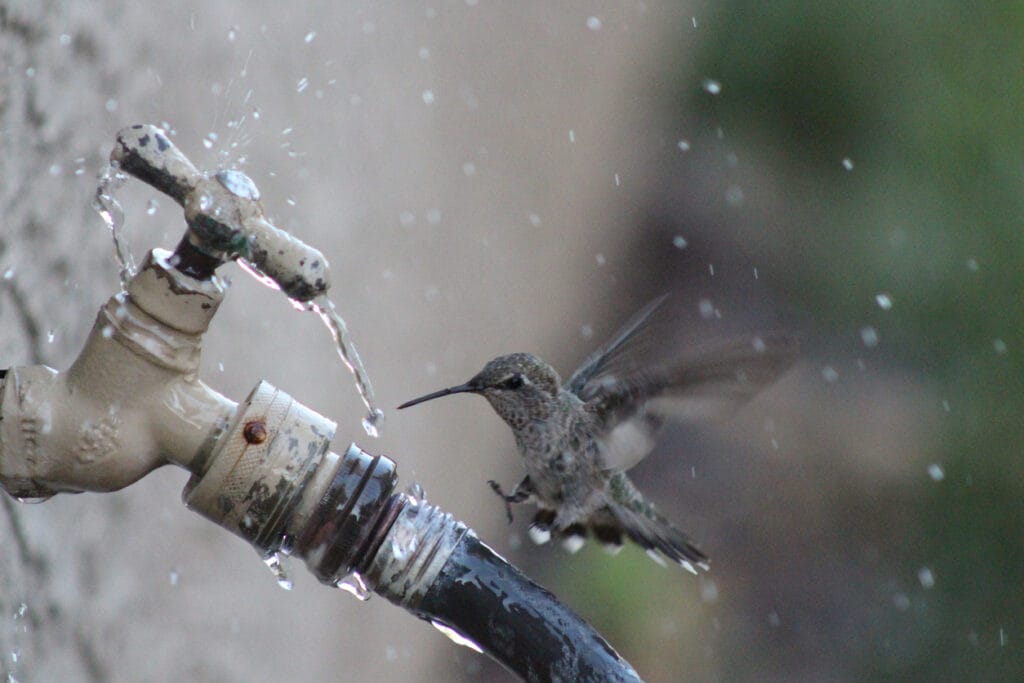
- Scientific name: Archilochus alexandri
- Length: 2.9 – 3.2 inches
- Weight: 3.1 g
- Wingspan: 1.6 – 1.9 inches
The Black-chinned Hummingbird is named after his discoverer — a zoologist named Dr. Alexandre.
This beautiful bird has a decurved bill of medium length and a gray-colored head. The gorget is often black, but you can catch a hint of violet or purple there under sunlight.
Author Note: In summer, Black-chinned Hummingbirds travel to the western states to breed. British Columbia and California are among their favorite breeding places.
Once they breed, they move to areas with more flowers like Mexico and South Carolina. This migration often happens in March and September.
Back-chinned Hummingbirds can be found wherever you can find flowers. You could casually spot one of them in your backyard if you have a flowery garden or some nectar feeders.
Black-chinned hummingbirds are some of the most common hummingbirds you could find in South Carolina.
Fun fact: These hummingbirds aren’t picky in the type of flower nectar they eat, which is why you could find them around any type of flower.
2. Ruby-throated Hummingbird

- Scientific name: Archilochus aolubris
- Length: 2.9 – 3.5 inches
- Weight: 3.1 g
- Wingspan: 3 – 4 inches
The Ruby-throated Hummingbird is one of the most common hummingbirds in South Carolina.
Generally, these hummingbirds have a bright green hue on their backs and heads. Their bellies are covered in white. However, the males have a reddish throat. The females, on the other hand, have brownish heads and sides.
Ruby-throated Hummingbirds spend their breeding seasons in South Carolina from April to November. They start migrating south to Mexico during wintertime. However, they can still be seen in South Carolina throughout the year.
You can find the Ruby-throated Hummingbirds in small towns around nectar feeders. These hummingbirds fly quickly between flowers to feed both on nectars and flying insects.
They have extremely short legs that prevent them from walking properly like most birds. That’s why they shuffle along a perch.
Fun fact: Male Ruby-throated Hummingbirds are very defensive when it comes to food and could defend their food source even if they’re not hungry.
3. Buff-bellied Hummingbird
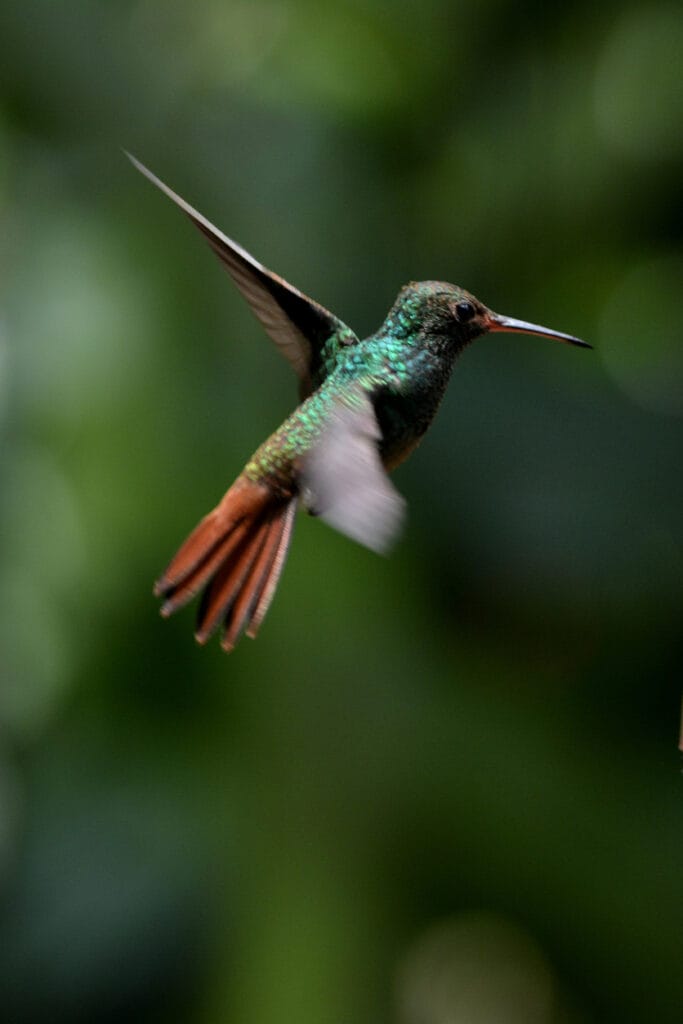
- Scientific name: Amazilia yucatanensis
- Length: 3.9 – 4.3 inches
- Weight: 3.5 – 3.9 g
- Wingspan: 5.5 – 5.7 inches
Buff-bellied Hummingbirds aren’t very common in South Carolina. When they do get spotted, it’s often in winter.
These hummingbirds are medium-sized birds with a brown back, white belly, and green crown. Both the male and the female have a dark red beak. However, the female’s beak is often darker.
Top Tip: Buff-bellied Hummingbirds breed mainly in Mexico. When winter falls, they migrate to the central and southern states.
You can find those hummingbirds in large shrubs or small trees. They like to nest close to the ground. While they prefer to nest in woodland edges, you can find them in backyards around flowers where they look for nectar and food.
Buff-bellied Hummingbirds take advantage of their large size to chase off smaller hummingbirds over sources of food.
Fun fact: You can attract Buff-bellied Hummingbirds using red tubular flowers like Red Salvia.
4. Anna’s Hummingbird

- Scientific name: Calypte anna
- Length: 3.8 – 4 inches
- Weight: 4 – 4.5 g
- Wingspan: 4.3 – 4.7 inches
Anna’s Hummingbirds are named after the Duchess of Rivoli, Anna Massena.
They are medium-sized birds who commonly boast a green or gray back, a pale belly, and a violet neck that transits into a black face and bill.
The best word to describe Anna’s Hummingbird’s presence in South Carolina is “accidental.” They are very rare to see and they often come to the state by mistake. They’re more commonly seen in California and the western coast of Washington.
You can find Anna’s Hummingbirds around backyards, nectar feeders, scrubs, and savannah. They mainly feed on small insects, spiders, nectars, and tree sap.
Anna’s Hummingbirds share a lot of their feeding environment with bees and wasps. On some rare occasions, these insects may accidentally impale themselves in the hummingbird’s bill. This could be lethal for the bird.
Fun fact: Anna’s Hummingbirds sometimes eat sand and ashes to provide themselves with minerals. How many times have you seen a bird eat sand?
5. Rufous Hummingbird
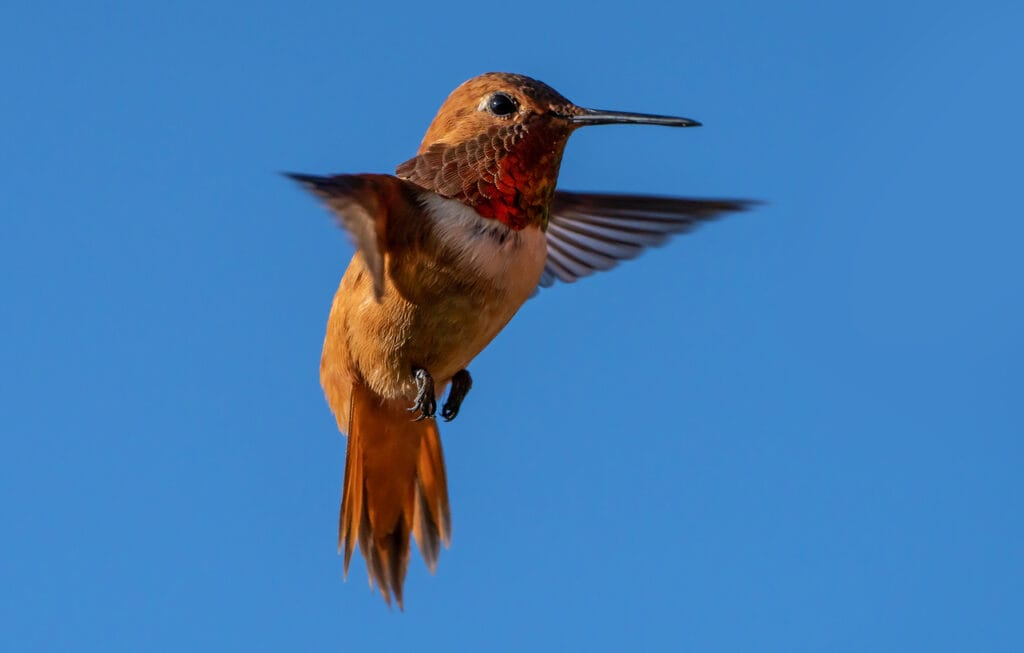
- Scientific name: Selasphorus rufus
- Length: 2.9 – 3.2 inches
- Weight: 3.5 g
- Wingspan: 3.8 – 4.2 inches
A Rufous Hummingbird is a small-sized bird with a brown hue all over its back and crown. The bill is medium-sized and black while the belly is white. It got the “Rufous” name from the male’s distinctive rufous gorget.
These hummingbirds breed north in the United States further than most other hummingbirds, which makes them important species in the Pacific Northwest ecosystem.
However, you can spot them in South Carolina in the winter from August to April. They’re considered a threatened species in the state.
Rufous Hummingbirds are often aggressive around their food. Often attacking other birds for seemingly no reason. They feed on nectars of tubular flowers, midges, and flies.
Fun fact: Rufous Hummingbirds are known to possess extraordinary flight skills. They can migrate up to 4,000 miles!
6. Broad-billed Hummingbird
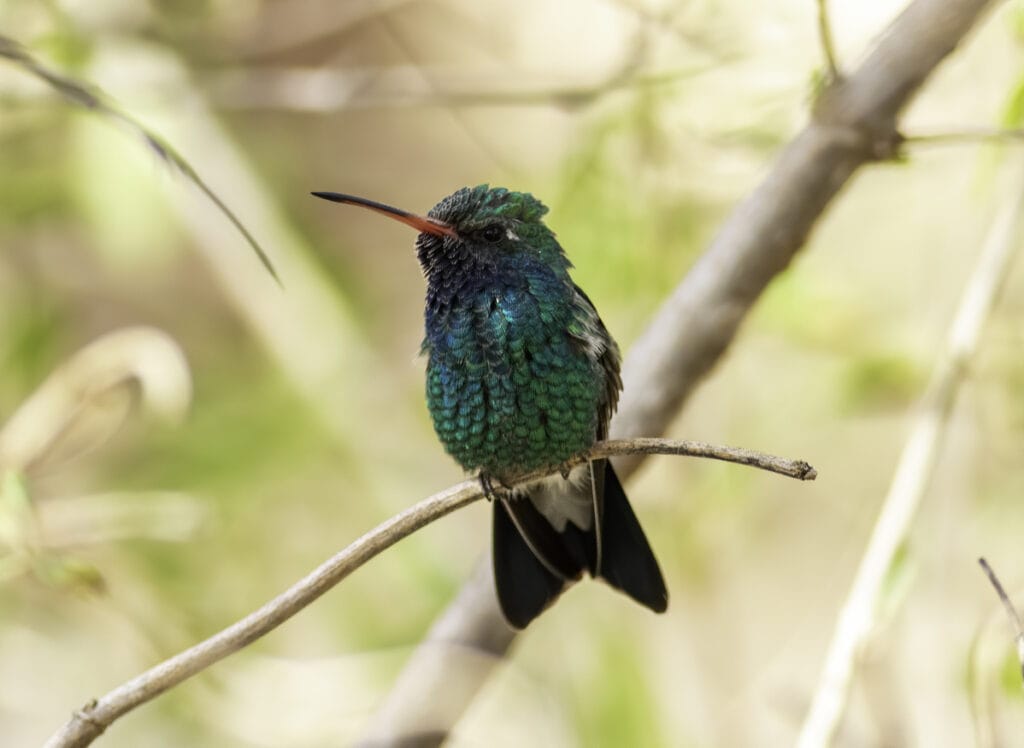
- Scientific name: Cynanthus latirostris
- Length: 3.2 – 4 inches
- Weight: 3.3 – 3.5 g
- Wingspan: 4.9 – 5.2 inches
Broad-billed Hummingbirds are another accidental resident of South Carolina on our list. The last time they were seen in South Carolina was back in 2008.
Author Note: These hummingbirds are easy to spot. The body is covered with various degrees of blue with the highest hue on the crown. These birds are small-sized and they have a long bright red bill.
Broad-billed Hummingbirds are often found all year in central Mexico. However, they migrate between March and September to mountain canyons in southern Arizona, Texas, and California. If you happen to be there, you’ll find these hummingbirds well above 5,000 feet!
These birds feed on flower nectars, nectar feeders, and insects they pick from the air or flowers. They have tiny legs that prevent them from walking. When they prefer not to fly, they often jump around.
Fun fact: Broad-billed Hummingbirds are one of the most “chill” birds out there. It’s rare to see two males fighting over food, territory, or females. Their name comes from the literal translation of their scientific name; Cynanthus latirostris.
7. Broad-tailed Hummingbird
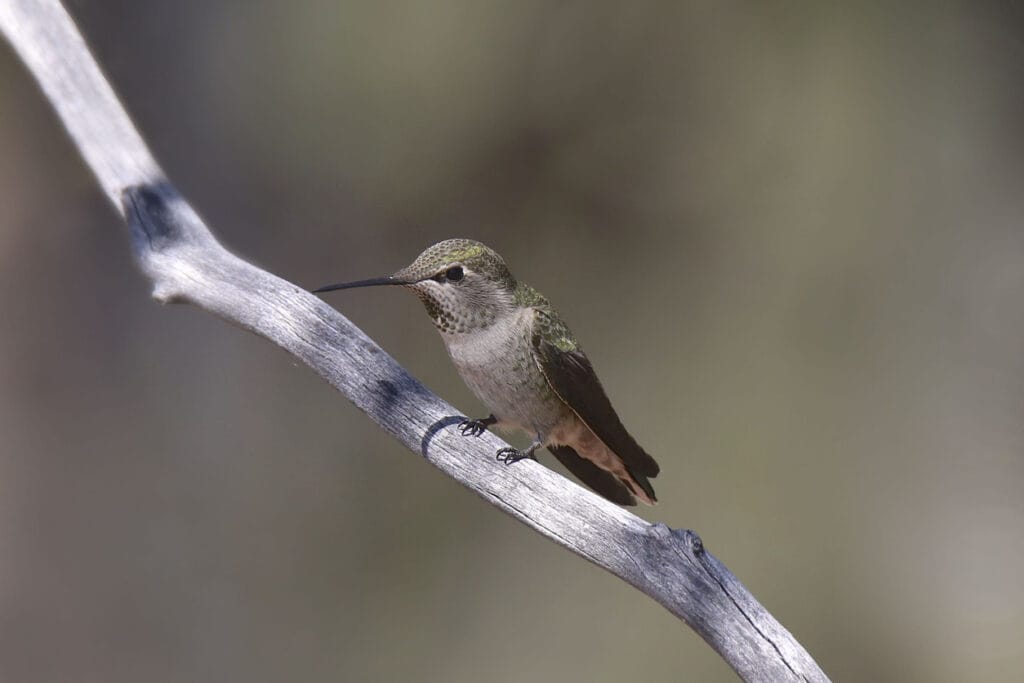
- Scientific name: Cynanthus latirostris
- Length: 3.2 – 3.8 inches
- Weight: 3.3 – 3.5 g
- Wingspan: 5 – 5.25 inches
Much like their Broad-billed cousins, the Broad-tailed Hummingbirds were only seen once in South Carolina. Specifically, in Hilton Pond center in 2021.
If there’s a word to describe the Broad-tailed Hummingbirds, it’s “beautiful.” These birds have an iridescent green back that gives off a blue luster under correct light conditions. The terminal feathers of the wings are colored dark brown.
The bills are black and short. But the beauty comes from the color of their throats. Males have iridescent rose-colored throats while females have white throats with black spots.
Broad-tailed Hummingbirds breed in Central Idaho and Southern Montana. They migrate twice a year, once in April and another time in late August. Their preferred winter home is Mexico.
Like most hummingbirds, the Broad-tailed feed on nectars and supplement with small insects. They often bring small insects to their young who can’t fly to get their food yet.
Fun fact: Broad-tailed Hummingbirds like to breed in altitudes up to 10,000 feet. To withstand the cold, they slow their heart rate and drop their body temperature.
8. Blue-Throated Mountain-gem
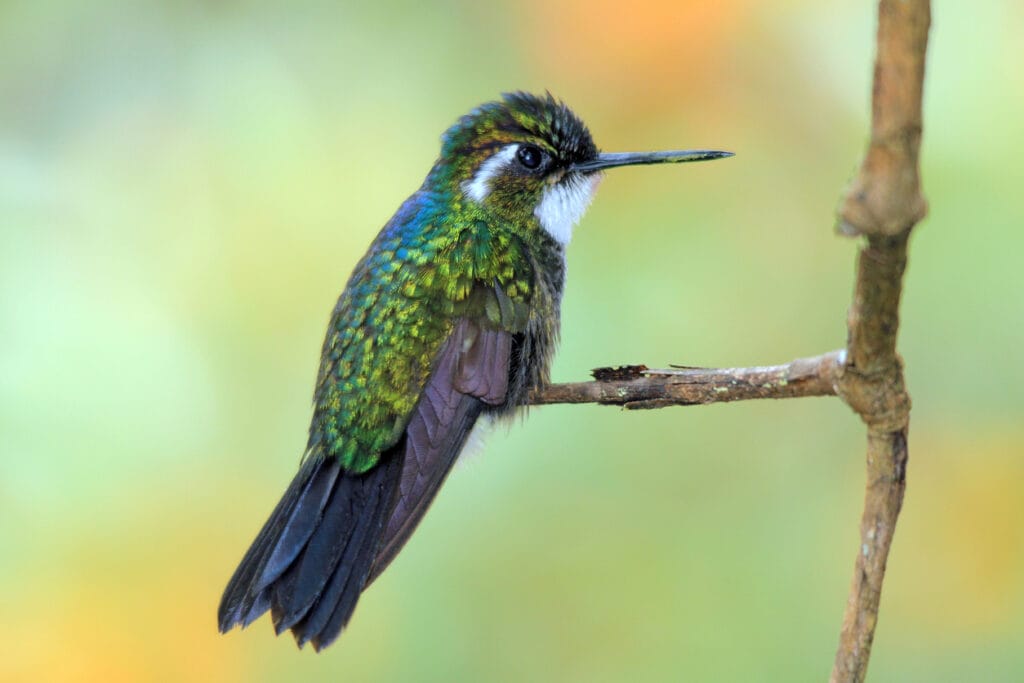
- Scientific name: Lampornis clemenciae
- Length: 4.3 – 5.5 inches
- Weight: 7.4 – 7.8 g
- Wingspan: 2.3 – 3.1 inches
Blue-throated Mountain-gems are one of the larger birds. They could grow up to almost 5 inches compared to the average 3.5 inches of other hummingbirds. They’re the largest hummingbirds that nest in the United States.
The white stripes behind their eyes and beaks make them easy to distinguish from other hummingbirds even mid-flight. They have black feathers on their backs and white feathers on their bellies. As their name suggests, they have an ocean blue hue on their throats.
Top Tip: Blue-Throated Mountain-gems breed near the mountain ranges of Texas and New Mexico. They migrate to multiple states over the time of year. They’re mostly seen in South Carolina around August.
However, they’re considered one of the rarest breeds to be seen in the state. They’re still accepted by the State’s Bird Records Committee.
It’s hard to spot them around flowers like most other hummingbirds. However, nectar is their favorite food, so put some nectar feeders in your backyard to improve your chances of seeing one.
Fun Fact: Blue-Throated Mountain-gems can live to impressive ages compared to their bird counterparts. The oldest living Mountain-gem was almost eight years old.
9. Calliope Hummingbird
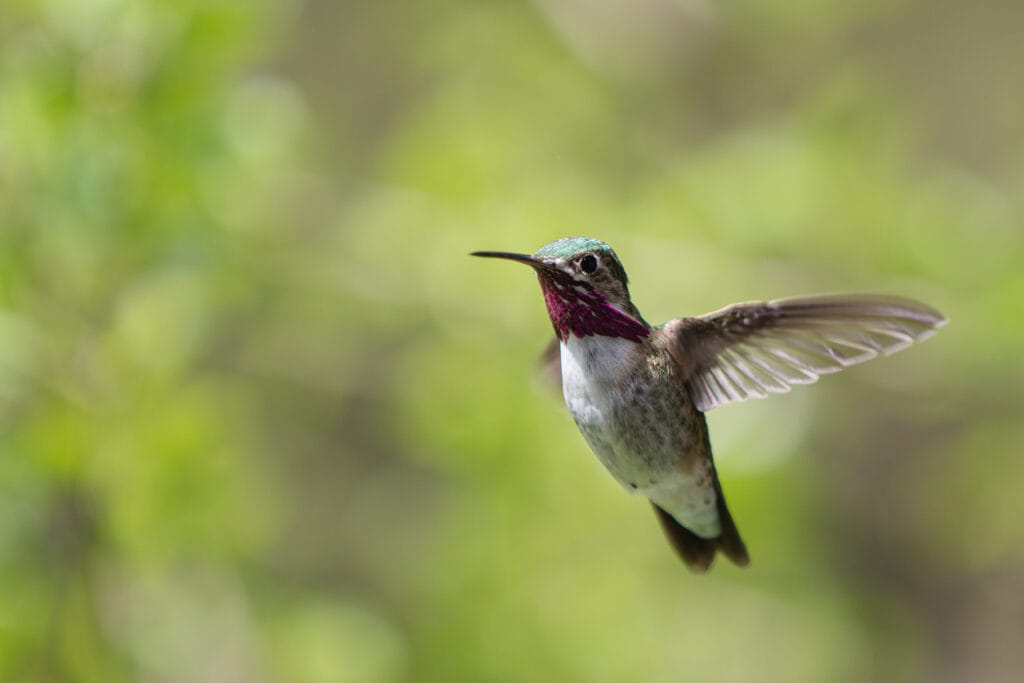
- Scientific name: Selasphorus calliope
- Length: 2.9 – 3.1 inches
- Weight: 2 – 3 g
- Wingspan: 3.8 – 4.3 inches
What’s best to follow after the largest hummingbirds in the States? That’s right! The smallest hummingbirds in the states; the Calliope Hummingbirds.
These birds are so small that the male weighs less than a penny!
Male Calliopes have green-colored backs and flanks, dark tails, and bright magenta-colored throats. The females don’t have the magenta throats and are whiter than the females in the belly area. The bills are quite small to suit the tiny body.
Calliope Hummingbirds mainly breed in northwestern states like California. In winters, they migrate to the states along the Gulf of Mexico.
These hummingbirds are so rare to find in South Carolina. The last few sightings were back in 2013 in Greenville.
Calliopes like to feed on nectars and insects, but you won’t find them in your backyard as they prefer to live in forests.
Fun Fact: Despite their small sizes, Calliope Hummingbirds travel more than 5000 miles every year between Mexico and Canada. Their tiny bodies don’t stop them from defending their territories from scary birds like Red-tailed hawks!
10. Allen’s Hummingbird
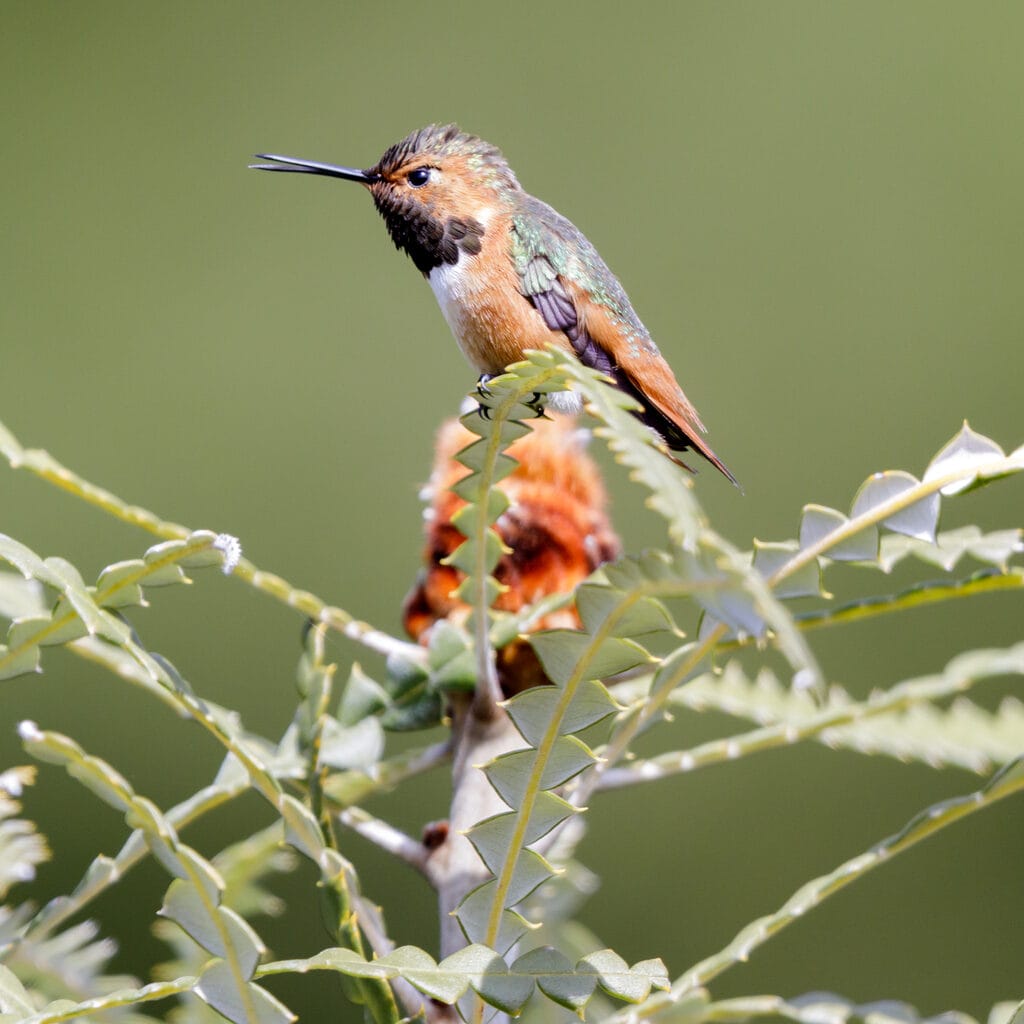
- Scientific name: Selasphorus sasin
- Length: 3 – 3.5 inches
- Weight: 3 – 3.2 g
- Wingspan: 4.3 – 4.7 inches
Allen’s Hummingbirds look quite similar to Rufous hummingbirds. However, they don’t have a mean personality and their outer tail feathers are narrower.
The males have red or orange-colored throats, bellies, tails, and eye rings. The females have these as well but without the orange throat color. Both genders have long bills and green-colored backs.
Author Note: Allen’s Hummingbirds build their nests in Mexico until they migrate to the Pacific Coast of California in January. They might spend a few days in South Carolina, but it’s rare to see them there.
In fact, the last time they were spotted in South Carolina was in 2008 around Lexington.
Their diet consists of nectar and small insects. They do prefer tubular flowers, though.
Fun fact: While not as aggressive as Rufous Hummingbirds, male Allen’s Hummingbirds will attack any other male of the same species if they come into their territory. They won’t even wait until they start to eat their food. They chase on sight!
You’ve Reached the End
It’s tough to distinguish hummingbirds from a distance. Especially with their high flying speed and unpredictable hovering paths.
Hummingbirds are wild birds. So it’s illegal to keep one as a pet. You can’t just go to a store and buy one.
However, if you do your homework, learn their shapes, and know their migration times; you’ll get the chance to see your favorite hummingbird.
If you’d like to have some hummingbirds in your yards while adding some beauty to them, consider planting flowers and adding nectar feeders to your gardens.
Many hummingbirds have declined in numbers over time. If you own a cat, it’s best to restrain it because it will attack the bird.
FAQ
To find out where recent sightings of hummingbirds have been, try eBird. You can search for the latest sightings or particular species or what has been seen in a certain area.
The Ruby-throated and Black-chinned Hummingbirds are the most common hummingbirds in South Carolina.
Try putting up some feeders and attract them to your own backyard. You have a good a chance as seeing them there as anywhere else!
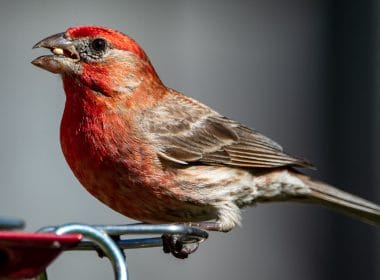

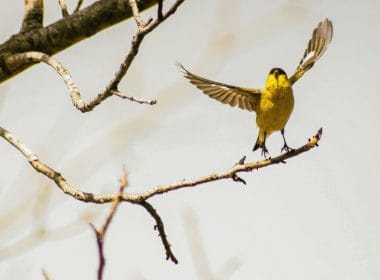

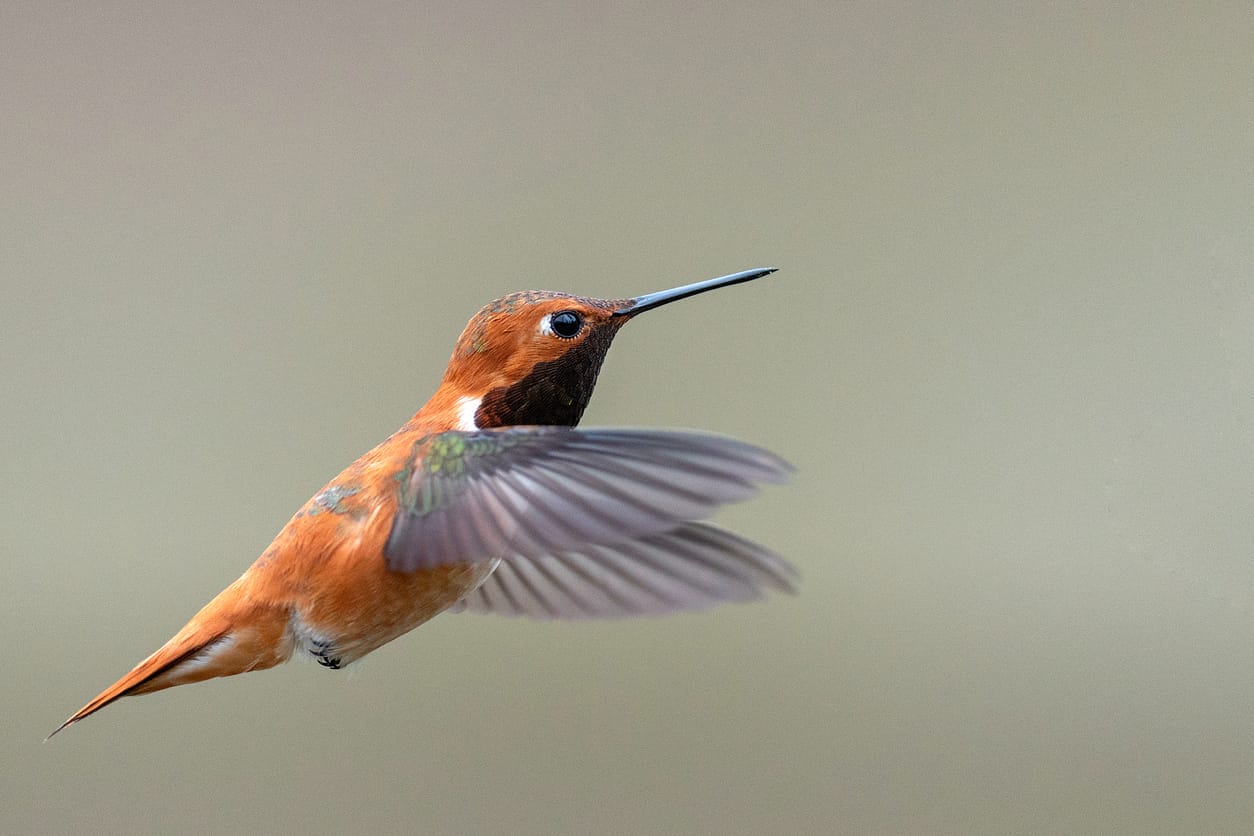
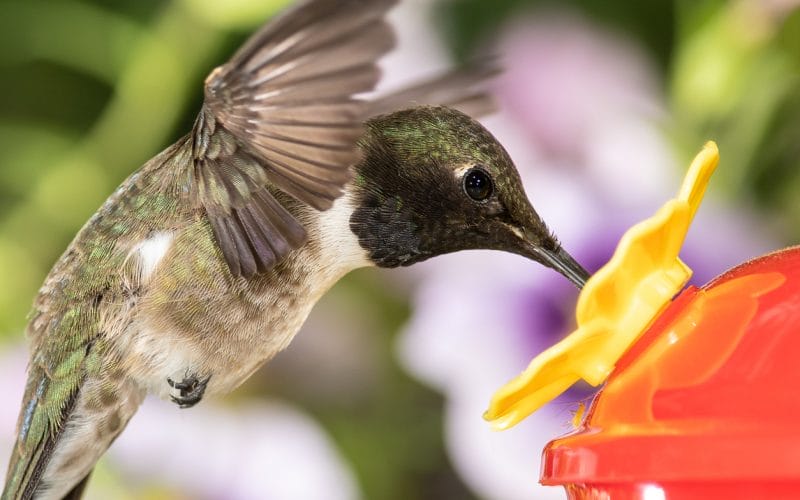
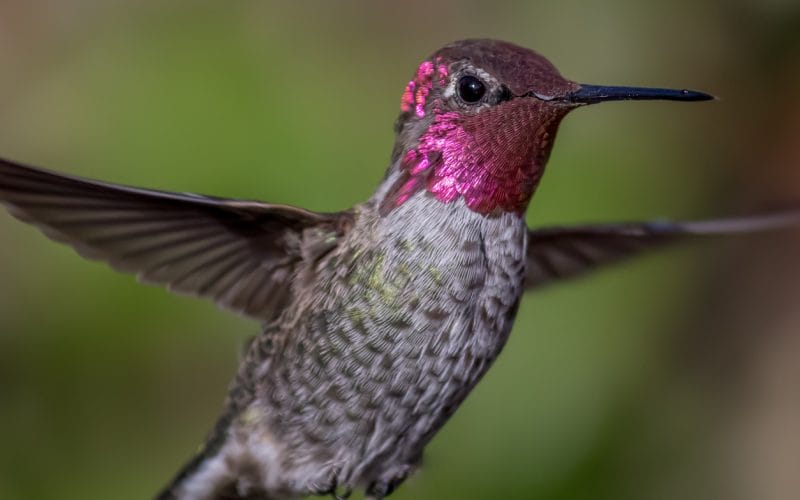
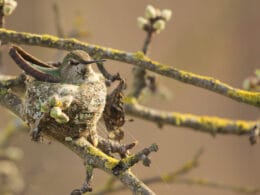

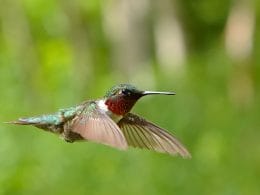
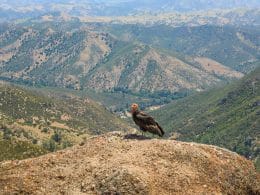
We have a Rivoli’s hummingbird visiting our feeders in Anderson county SC on the shore of lake Hartwell. Wondering if anyone else has seen Rivoli’s in SC?